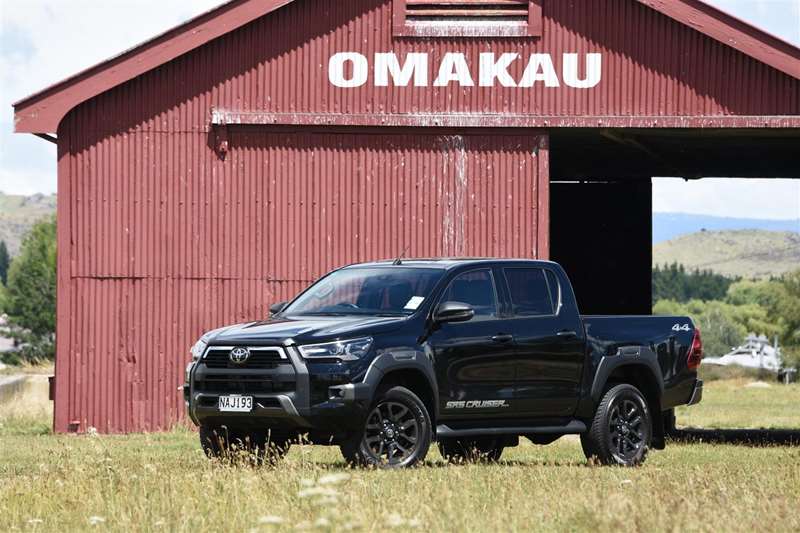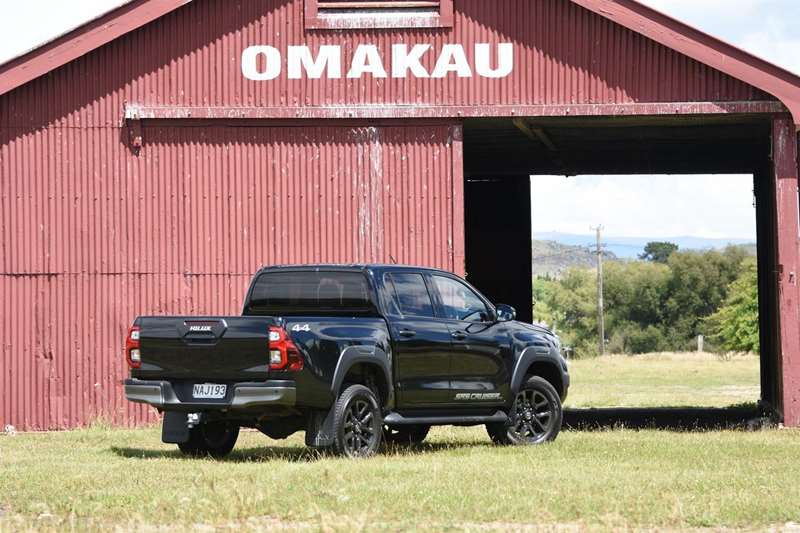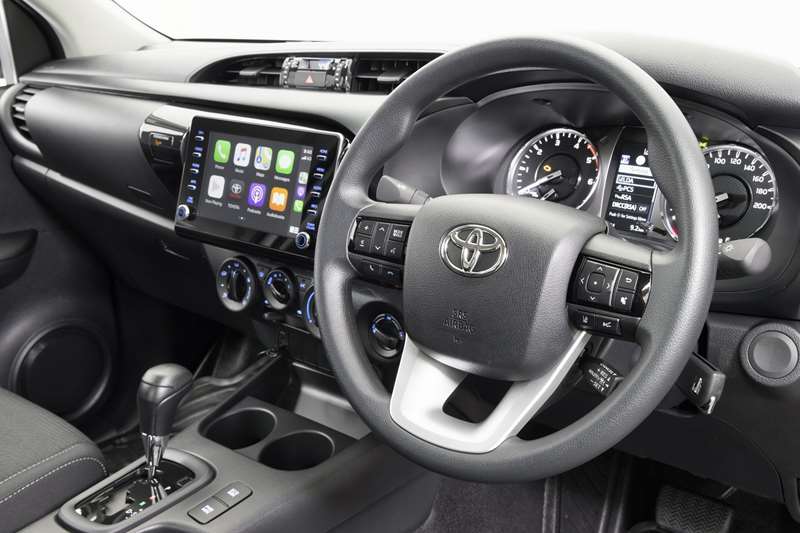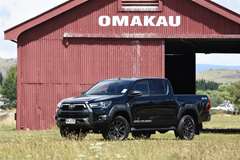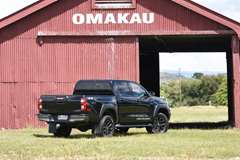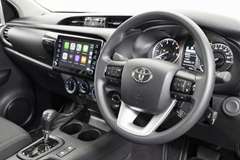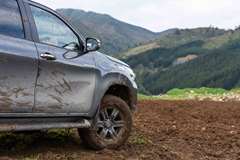Once an off-roading legend in New Zealand, Toyota has slipped off the pace a little in recent years. David Thomson gets behind the wheel of the Hilux SR5 Cruiser 4WD Double Cab to see if the proud Japanese brand can return to the top.
What’s new?
Around since late-2015, the current eighth-generation Hilux is firmly entrenched as a staple of New Zealand’s light commercial market. Not, to be fair, enjoying quite the sales success as is predecessors, as the mantle of this country’s top-selling light commercial has been snatched by the Ford Ranger in recent years.
While Ranger’s success may irk Toyota, Hilux’s sales performance remains very strong, with 5786 vehicles delivered to customers in 2020. That result kept Hilux firmly entrenched as New Zealand’s second-top selling new vehicle of the year. By way of further perspective, one in four new vehicles Toyota sells here is a Hilux, and Hilux on its own accounts for more Kiwi sales than the entire model ranges of companies such as VW, Honda, Mercedes-Benz, Subaru, BMW and Audi.
There’s change aplenty in the light commercial market just now. Holden’s exit from New Zealand last year means the Colorado — previously one of our top-selling utes — is gone. Mazda, with its latest BT-50, and Isuzu, with its D-Max, now have all-new models on sales, and new versions of the Nissan Navara, Ford Ranger and VW Amarok are set to appear this year.
The ninth-generation Hilux is still some years away, but in the meantime Toyota has introduced a substantially revised eighth-generation version.
The facelift, which includes mechanical as well as visual and specification changes, was masterminded across the Tasman, at Toyota’s Melbourne design centre.
This makeover includes visual tweaks inside and out, enhanced ICT, safety suites, suspension changes and a substantial mechanical upgrade for diesel models, too. This extends to a new cylinder block and pistons, a larger turbo, new exhaust manifold and increased fuel injection pressure and cooling improvements, making the Hilux’s trusty 2.8-litre powerplant, in many respects, a new engine.
The mechanical changes deliver a 20kW power boost to 150kW and — for automatic models — a 50Nm torque increase to 500Nm. This, in turn, brings the Hilux up to the mark for outputs against its key rivals, while at the same time providing a 10% improvement in fuel economy and an 11% reduction in emissions.
I took to the wheel of the $59,990 SR5 Cruiser 4WD Double Cab for this appraisal. Special-edition Mako aside, it’s the flagship of the new range.
What’s it look like?
We’re testing a ute here, so an upright look with plenty of presence is taken for granted.
The SR5 models are the most visually altered of the updated Hilux line. Picking up a chunky look that draws in part of on Toyota’s North American pick-ups, they feature a redesigned and bolder grille, new LED headlights and LED taillights.
The SR5 cruiser takes up a matte black grille surround, black-tinted alloys shod with 265/60 R18 tyres, special decals and tinted rear windows.
These features combined with a black paint finish to give the test car plenty of road presence.
What’s it like inside?
It’s a case of all eyes to the centre of the dash on the upgraded Hilux, where a prominent eight-inch touchscreen replaces the six- and seven-inch units used previously. Along with being larger and clearer, the new screen, which is neatly integrated into the dash, is the interface of the ICT system that now includes Apple CarPlay and Android Auto functionality.
Allied to a very good nine-speaker JBL sound system, the ICT interface is a huge step up. Wireless connectivity is seamless, too, though just a single USB plug-in point is provided.
The instrument binnacle takes a new 4.2-inch multi-information display screen, and the blue colour theme to this and the conventional gauge needles links neatly to blue strip lighting in the door trims.
The cabin features dark trim colours and, despite the appearance of some contrast stitching, all major interior panels aside from the padded centre armrest are robust hard plastics.
Trimmed in artificial leather with perforated squabs, the front seats (both heated and power-operated for the driver) are broad and supportive, providing a command-style seating position that was comfortable for extended driving periods. Rear room is adequate, and the 60:40 split back seat squabs can be easily tilted up for luggage stowage.
What comes as standard?
The SR5 Cruiser is well equipped. Additional to the features covered off above, it takes satellite navigation, keyless entry and push-button start, single-zone climate control and an auto-dimming interior mirror.
The core safety package, which is standard on all Hilux models, includes a pre-collision system with autonomous emergency braking (including pedestrian and cyclist detection), lane departure alert, radar cruise control and road sign recognition. Other key safety items include seven airbags, a reversing camera and trailer sway control.
What’s it like to drive?
Bringing the Hilux driving experience up to the level now offered by its rivals has been the key focus of this latest update, and Toyota has achieved well in this regard.
The benefits are most obvious on the open road, where both the extra torque and the availability of all of it from just 1600rpm means that the 2.8-litre turbo engine does not need to be worked nearly as hard as before to maintain momentum. This delivers appreciable gains in performance, mechanical refinement and economy.
Comfort also takes a noticeable step-up in sophistication, with an improvement in ride quality that is especially obvious when driving unladen. This, combined with the mechanical enhancements, gives the revised Hilux a much more relaxed (and therefore more relaxing) demeanour during extend spells behind the wheel. On test, these spells included significant time on gravel roads in the Maniototo, where a twist of the appropriate knob to engage four-wheel-drive ensured progress that was not only comfortable, but also surefooted.
Off-road test time was restricted to a relatively light workout, scrambling across a few rocky and rutted surfaces, engaged low ratio four-wheel drive to conquer one especially steep incline, and using hill descent control on the way back down. A Hilux is capable of far more than this, but the test vehicle was fitted with road-focused tyres.
Round-town performance was effortless, and while the SR5 Cruiser’s hauling capacity remains at 3500kg braked, the gains in power and torque will certainly make it a little easier.
Verdict
A slew of new arrivals are lifting the bar in the ultra-competitive ute market, demanding a thorough response from Toyota. The extensive mid-life refresh of the Hilux is impressive, and exactly what was required.
Photos: David Thomson
